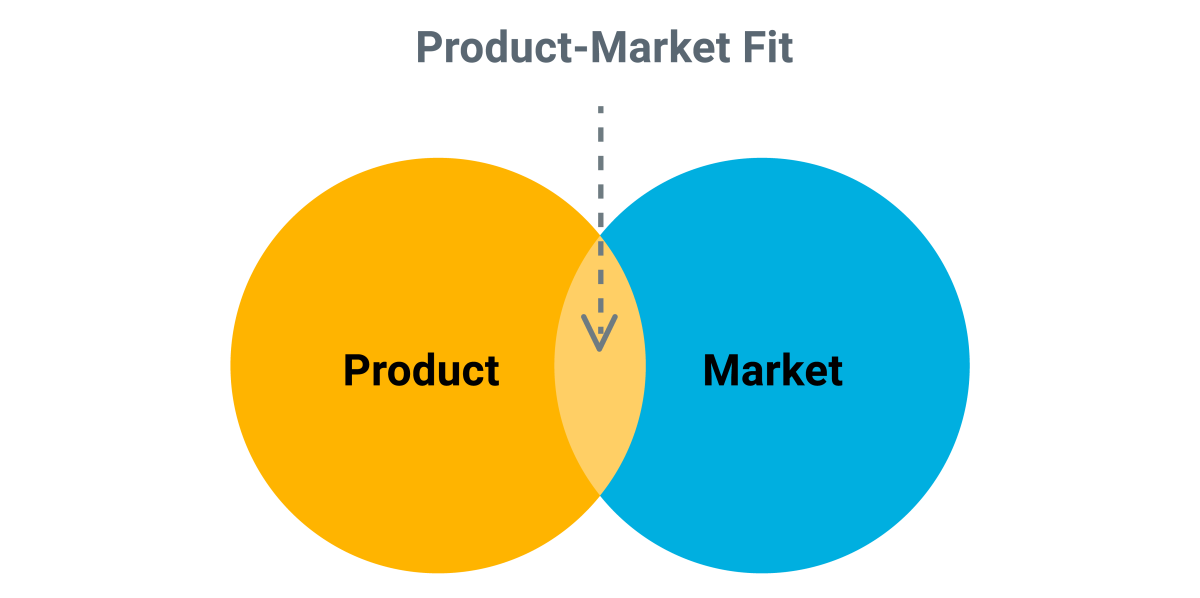In today’s dynamic markets, achieving a product-market fit framework has become more than just a milestone; it’s the heartbeat of successful businesses. It is not a one-size-fits-all concept; it’s about creating a product that customers can’t live without. In this customer-centric journey, we explore the significance of product marketing strategy, market segmentation strategies, competitive analysis tools, and key metrics revolving around customer satisfaction and retention.
Why Product-Market Fit Matters for Customers
Understanding the needs and desires of your target audience is paramount in sales and marketing. Investing substantial resources without ensuring a genuine market need for your product can lead to a customer disconnect. The absence of a product-market fit framework might result in awkward conversations with executives and an uphill battle for survival. Achieving market fit is not just about hitting revenue milestones; it’s about becoming an integral part of your customers’ lives.
Moreover, product market fit is a guiding compass in sales and marketing in a world brimming with product ideas. It helps you discern the right direction for your initial focus and efforts. This alignment is not just a strategic advantage; it’s a customer-focused strategy that refines your positioning and messaging, ensuring resonance in the market and contributing to building brand awareness.

Strategies for Customer-Centric Market Fit Success
Determine your target customer
Start by defining your target customer through comprehensive research. Dive into specific personas to understand their needs, preferences, and capacities. This foundation allows you to structure your product effectively, aligning it with the expectations of your audience.
Identify underserved customer needs
Delve into the “problem space” and the “solution space” to uncover underserved customer needs. Analyze their problems and determine the unique features your product needs to stand out. This deep understanding ensures that your product caters directly to demand, employing effective segmentation strategies from brand to demand.
Define the value proposition
Articulate your product’s value proposition, emphasizing how it adds value and differentiates itself from competitors. This step ensures your product addresses real problems and provides tangible benefits to various segments, aligning it with customer expectations.
Build the MVP feature set
Specify the feature set for your Minimal Viable Product (MVP) based on functionality, reliability, usability, and delightfulness. This core set of features propels your product toward maximum growth, meeting the needs and intentions of your target customers.
Create MVP prototype and test to iterate
Specify the feature set for your Minimal Viable Product (MVP) based on functionality, reliability, usability, and delightfulness. This core set of features propels your product toward maximum growth, meeting the needs and intentions of your target customers.

Measuring Customer Satisfaction and Retention
Monitoring key metrics that revolve around customer satisfaction and retention is crucial to gauging the effectiveness of your lead generation, aligning with your gtm strategy.
Bounce rate: The bounce rate, indicating whether visitors stay on your product website, is critical for growth. A high bounce rate suggests a mismatch with customer expectations. However, factors like slow UX, subpar content, and minor issues can contribute. Higher visitor retention enhances interaction, reflecting better product marketing strategy.
Net promoter score (NPS): Use NPS as a valuable tool to obtain direct user feedback through a questionnaire-based survey. A higher NPS score indicates your product’s positive reception and success in the market, reflecting customer satisfaction.
Customer lifetime value (CLV):CLV represents the average profit derived from each customer throughout their entire product usage period. A higher CLV enhances profits and validates your product-market fit analysis success, indicating how effectively your model retains clients over time.
Lead vs customers: Identifying leads and converting them into customers is crucial for ensuring your product is competitive and stands out. This process guides product owners in planning their goals effectively for product-market fit.
Customer retention ratio: The proportion of clients kept for a given time indicates customer loyalty and satisfaction. Monitoring strategies for customer retention aid in assessing how well the product satisfies long-term consumer preferences and needs.

Real-World Success Stories
Looking at successful examples reinforces the importance of adaptation and persistence in achieving market alignment:
User-pilot: Started as an onboarding tool and evolved into a comprehensive product adoption tool, understanding customer needs and expanding their features accordingly.
Slack: Pivoted from developing a role-playing game to becoming a communication tool with a 10 million user base, showcasing the importance of adapting to market demands.
Dropbox: Identified a market need for seamless file synchronization and ensured market fit through a compelling explainer video and a successful viral referral campaign, ultimately contributing to building brand awareness.
Empowering Product-Market Fit Success with iTech Series
In the ever-evolving landscape of technology, iTech Series stands as a steadfast partner to marketing leaders. Leveraging our profound expertise in content amplification and lead generation, we specialize in bridging the gap between tech brands and B2B tech decision-makers. By operating renowned platforms like MarTechSeries, AiThority, CIO Influence, HRTech Series, Global FinTech Series, and SalesTech Star, iTech Series is a vital resource for neophytes and seasoned technology professionals globally.
Our tailored content syndication and lead generation services are invaluable for tech companies striving to achieve product-market fit. iTech Series provides insightful content through well-researched articles and facilitates engaging interviews with top industry minds. By partnering with us, tech enterprises can amplify their brand content, connect with decision-makers, and seamlessly navigate the path to success. iTech Series is not just a publication; it’s a strategic ally for tech companies on their journey to market success.
Conclusion
In pursuing a product-market fit, one must emphasize the importance of customer-centric strategies for b2b brand awareness. You achieve and cultivate lasting relationships by understanding your customers, meeting their needs, and continually iterating based on their feedback, which is essential for a successful go-to-market strategy. In a landscape where customer loyalty is a prized asset, putting customers at the core of your product development journey ensures sustained success and growth strategies for customer retention.
Discover the impact of product marketing strategy, market segmentation, competitive analysis, and key metrics on customer satisfaction. Connect with us to refine your approach, engage your audience, and drive growth.




